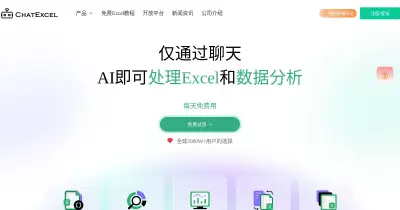<img src="https://user-images.githubusercontent.com/4738426/33545371-e652d482-d8d5-11e7-9ea5-c676d9313378.png" height="50"/>
This is the development branch for Dicoogle 3. See here for the development line of Dicoogle 2, which is being phased out.
Dicoogle is an extensible, platform-independent and open-source PACS archive software that replaces the traditional centralized database with a more agile indexing and retrieval mechanism. It was designed to support automatic extraction, indexing and storage of all meta-data detected in medical images, including private DICOM attribute tags, without re-engineering or reconfiguration requirements.
The architecture of Dicoogle is described in the following articles:
- Lebre, R., Pinho, E., Jesus, R. , Silva, L.A.B., Costa, C. Dicoogle Open Source: The Establishment of a New Paradigm in Medical Imaging. 2022 Journal of Medical Systems 46: 77. doi:10.1007/s10916-022-01867-3 [link]
- Lebre, R., Pinho, E., Silva, J.M., Costa, C. Dicoogle Framework for Medical Imaging Teaching and Research. 2020 IEEE Symposium on Computers and Communications (ISCC) [link]
- Valente, F., Silva, L.A.B., Godinho, T.M., Costa, C. Anatomy of an Extensible Open Source PACS. J Digit Imaging (2016) 29: 284. doi:10.1007/s10278-015-9834-0 [link]
Our official website is at https://www.dicoogle.com. A few essential plugins for Dicoogle are available to download there, as well as a built jar of the Dicoogle platform. To learn how to use Dicoogle, please see our Learning Pack. To build the core platform yourself, please see the section on Building Dicoogle below. The learning pack also has a page on Building Dicoogle.
Brief Documentation
Setup Dicoogle Platform Environment
-
Copy dicoogle.jar to the installation folder. For example DicoogleDir/
-
Create the Folder DicoogleDir/Plugins.
This folder will hold the plugins used by our instance of the Dicoogle Platform.
-
Next, copy the desired plugins into the DicoogleDir/Plugins Folder.
The typical setup of Dicoogle involves the deployment of an Indexing and Query Plugin. We supply an implementation of such plugin based in Apache Lucene.
-
Run Dicoogle.
Dicoogle may be run as a server:
java -jar dicoogle.jar -sTo load the server and open Dicoogle's user interface with the default browser:
java -jar dicoogle.jar
Available Plugins
We provide a few plugins at the official website, in the Downloads page.
-
Lucene Index/Query Plugin - (lucene.jar)
Plugin Based on Apache Lucene to support indexing and querying of DICOM meta-data. With this plugin set, it is possible to index nearly meta-data and perform free text, keyword-based, and range-based queries.
-
File Storage Plugin - (filestorage.jar)
Plugin used for the storage of DICOM Files. This plugin is necessary in order to use Dicoogle as a complete DICOM Storage Provider. The core platform provides a fallback implementation which supports reading (but not storing) files from the local file system.
For storage purposes, our file storage plugin maps the DICOM hierarchical organization (Patient->Study->Series->Image) into a directory tree in the file system. Every object in the Dicoogle Platform may be traced back to its storage location by a URI, similar to file:/tmp/file. In order to support multiple providers, every Storage plugin must define a unique scheme, which maps to the protocol used to store and retrieve content.
-
Settings
root-dir: is the root directory where DICOM Files will be storedscheme: Specifies the scheme/protocol of the file plugin. This value is arbitrary, but must be unique among all installed plugins. As such, avoid using well known protocol names such as http or file.
-
Configuring Plugins
Plugin configurations are accessible via "/DicoogleDir/Plugins/settings/PluginName.xml", where PluginName stands for the name of the plugin. Upon initialization, if no configurations file is supplied, a new one with the default values is created.
Using the Web Application
-
Configuring Services
In the Management Page, Services and Plugins settings, it is possible to start and/or stop currently running services in real time. Moreover, some configurations like the DICOM service ports may be set.
-
Index a Directory
Indexing a directory is done simply by accessing the Indexer page, on the side bar. In this page, one can select a root directory to index. The path is a URI defined according to the storage provider, and defaults to the
filescheme.In the Management pange, one may also enable the Dicoogle Directory Watcher, which creates a daemon that listens for new files in the root directory. After selecting the configurations, the "Apply Settings" button must be pressed. When the right settings are saved, the Start buttons fires the indexing process. Please note that this process may take considerable time to complete.
-
Using the Search Interface
The search page enables users to execute queries over the indexed meta-data. The query syntax is similar to the Lucene's Tag:Value query format, but free text searches are also supported. For inexperienced users, an advanced input module may also be used.
In the search interface, it is also possible to select which providers to query. Query providers are actually Query Plugins, that are installed either in the local instance of Dicoogle, or in remote instances if the platform is using the WAN plugin. Therefore, be careful and select exactly which providers you want to query, in order to retrieve more accurate and faster results.
-
Export Results
After running a query, the result browser shows up, giving the user an intuitive hierarchical view of the results. On this page, there is also an Export button, which is used in order to export the query results into a CSV file. When the export button is clicked, the user has to select which tags (s)he wants to export in the CSV file. This selection is heavily assisted by the interface, on which the user may type an incomplete tag and have presented the available candidates that match the inserted term. Moreover, the text box allows users to copy a list of tags directly from another CSV file, enabling an easier generation of reports.
Using the Web Services
Let us assume that the Web Services for our instance of Dicoogle are running in https://demo.dicoogle.com/
-
Searching Dicoogle provides a flexible web service for querying, under the
/searchendpoint.-
Search by Date Range, Access images in date 2005/03/29
Query:
"StudyDate:[20050329 TO 20050329]"URL:
https://demo.dicoogle.com/search?query=StudyDate:[20050329%20TO%2020050329] -
Access images in date 2005/03/29 and CT (Computer Tomography) modality
Query:
"Modality:CT AND StudyDate:[20050329 TO 20050329]"URL:
https://demo.dicoogle.com/search?query=Modality:CT%20AND%20StudyDate:[20050329%20TO%2020050329] -
Free text search, looking for CT keyword
Query:
CTURL:
https://demo.dicoogle.com/search?query=CT
-
-
Access the list of attributes of an image (by SOPInstanceUID)
URL:
https://demo.dicoogle.com/dump?uid=1.3.12.2.1107.5.1.4.54023.30000005032914013107800000965 -
Get a DICOM File
URL:
https://demo.dicoogle.com/legacy/file?uid=1.3.12.2.1107.5.1.4.54023.30000005032914013107800000965 -
Return documents from particular query providers (useful for queries that do not follow the typical Lucene query format)
URL:
https://demo.dicoogle.com/search?query=Modality:NM&provider=lucene&provider=mongoParameters:
- query : Query String
- provider: name of the query providers - multiple - optional
- all: default - asks all available providers.
- provider name: name of the provider, e.g.
lucene.
-
Force Dicoogle to index a given Resource. (useful when conventional notification systems (DICOM Services, DirectoryMonitoring, Human Interface) fail to start the index procedure)
URL:
https://demo.dicoogle.com/management/tasks/index?uri=file:/tmp/dataset-ieeta/- Method:
POST - Parameters:
- uri: The root identifier of the resources that will be indexed. Please note that Dicoogle will fetch these resources from a storage plugin. Therefore, a plugin capable of handling these resources must be enabled. The provider is identified by the URI's scheme.
- Method:
A live demo was deployed at the given URL. Feel free to experiment with these services.
We also have programmatic APIs for interfacing with Dicoogle in JavaScript, Java, and Python.
Create your own Plugins
In order to integrate new functionalities in Dicoogle, you may create your own plugin set. A plugin set comprises plugins that are developed with the intent of supporting a given feature, and are packaged in a single jar file for deployment. See the learning pack on Plugin Development for our guide (we also have a wiki page), and our sample plugin project for a base project from which you can start making your own plugins.
Building Dicoogle
Before building, please make sure that your system contains the following tools:
- Java JDK, either Oracle or OpenJDK (at least version 8);
- Maven 3;
- Retrieve the full source code from this repository:
git clone https://github.com/bioinformatics-ua/dicoogle.git - Navigate to the project's base directory, and build the parent Maven project by calling
mvn install.- Note: this will build the web application using an embedded version of Node.js and npm. To skip building the webapp:
mvn install -Dskip.installnodenpm -Dskip.npm
- Note: this will build the web application using an embedded version of Node.js and npm. To skip building the webapp:
- The resulting jar file can be found in "./dicoogle/target".
Contributing
The open source project is maintained by UA.PT Bioinformatics and BMD Software. Your contributions to the software are also welcome. Dicoogle is sought to be useful for R&D and the industry alike. You may find our Development Guidelines in the wiki. Issues containing the easy label should be the most suitable for first open source contributions. For tech support, please prefer contacting the maintainers instead of creating an issue.
Support and consulting
Please contact BMD Software for professional support and consulting services.
Project committers
Maintainers:
- Luís Bastião (BMD Software - development leader) - @bastiao
- Eduardo Pinho (BMD Software - co-leader) - @Enet4
- Rui Lebre (UA.PT Bioinformatics - core, elearning) - @rlebre
Contributors:
- Rui Jesus (BMD Software) - @Rui-Jesus
- Tibério Baptista (BMD Software) - @Tiberio-Baptista
Past developers:
- Carlos Ferreira
- David Campos
- Eriksson Monteiro
- Frederico Silva
- Frederico Valente
- Jorge Miguel Silva
- Leonardo Oliveira
- Luis Ribeiro
- Renato Pinho
- Samuel Campos
- Tiago Godinho
Project leaders
- Carlos Costa and José Luis Oliveira (UA.PT Bioinformatics, scientific advisors)
- Luís Bastião (BMD software -
编辑推荐精选


酷表ChatExcel
大模型驱动的Excel数据处理工具
基于大模型交互的表格处理系统,允许用户通过对话方式完成数据整理和可视化分析。系统采用机器学习算法解析用户指令,自动执行排序、公式计算和数据透视等操作,支持多种文件格式导入导出。数据处理响应速度保持在0.8秒以内,支持超过100万行数据的即时分析。


DeepEP
DeepSeek开源的专家并行通信优化框架
DeepEP是一个专为大规模分布式计算设计的通信库,重点解决专家并行模式中的通信瓶颈问题。其核心架构采用分层拓扑感知技术,能够自动识别节点间物理连接关系,优化数据传输路径。通过实现动态路由选择�与负载均衡机制,系统在千卡级计算集群中维持稳定的低延迟特性,同时兼容主流深度学习框架的通信接口。


DeepSeek
全球领先开源大模型,高效智能助手
DeepSeek是一家幻方量化创办的专注于通用人工智能的中国科技公司,主攻大模型研发与应用。DeepSeek-R1是开源的推理模型,擅长处理复杂任务且可免费商用。


问小白
DeepSeek R1 满血模型上线
问小白是一个基于 DeepSeek R1 模型的智能对话平台,专为用户提供高效、贴心的对话体验。实时在线,支持深度思考和联网搜索。免费不限次数,帮用户写作、创作、分析和规划,各种任务随时完成!


KnowS
AI医学搜索引擎 整合4000万+实时更新的全球医学文献
医学领域专用搜索引擎整合4000万+实时更新的全球医学文献,通过自主研发AI模型实现精准知识检索。系统每日更新指南、中英文文献及会议资料,搜索准确率较传统工具提升80%,同时将大模型幻觉率控制在8%以下。支持临床建议生成、文献深度解析、学术报告制作等全流程科研辅助,典型用户反馈显示每周可节省医疗工作者70%时间。


Windsurf Wave 3
Windsurf Editor推出第三次重大更新Wave 3
新增模型上下文协议支持与智能编辑功能。本次更新包含五项核心改进:支持接入MCP协议扩展工具生态,Tab键智能跳转提升编码效率,Turbo模式实现自动化终端操作,图片拖拽功能优化多模态交互,以及面向付费用户的个性化图标定制。系统同步集成DeepSeek、Gemini等新模型,并通过信用点数机制实现差异化的资源调配。


腾讯元宝
腾讯自研的混元大模型AI助手
腾讯元宝是腾讯基于自研的混元大模型推出的一款多功能AI应用,旨在通过人工智能技术提升用户在写作、绘画、翻译、编程、搜索、阅读总结等��多个领域的工作与生活效率。


Grok3
埃隆·马斯克旗下的人工智能公司 xAI 推出的第三代大规模语言模型
Grok3 是由埃隆·马斯克旗下的人工智能公司 xAI 推出的第三代大规模语言模型,常被马斯克称为“地球上最聪明的 AI”。它不仅是在前代产品 Grok 1 和 Grok 2 基础上的一次飞跃,还在多个关键技术上实现了创新突破。


OmniParser
帮助AI理解电脑屏幕 纯视觉GUI元素的自动化解析方案
开源工具通过计算机视觉技术实现图形界面元素的智能识别与结构化处理,支持自动化测试脚本生成和辅助功能开发。项目采用模块化设计,提供API接口与多种输出格式,适用于跨平台应用场景。核心算法优化了元素定位精度,在动态界面和复杂布局场景下保持稳定解析能力。


流畅阅读
AI网页翻译插件 双语阅读工具,还原母语级体验
流畅阅读是一款浏览器翻译插件,通过上下文智能分析提升翻译准确性,支持中英双语对照显示。集成多翻译引擎接口,允许用户自定义翻译规则和快捷键配置,操作数据全部存储在本地设备保障隐私安全。兼容Chrome、Edge、Firefox等主流浏览器,基于GPL-3.0开源协议开发,提供持续的功能迭代和社区支持。
推荐工具精选
AI云服务特惠
懂AI专属折扣关注微信公众号
最新AI工具、AI资讯
独家AI资源、AI项目落地

微信扫一扫关注公众号









